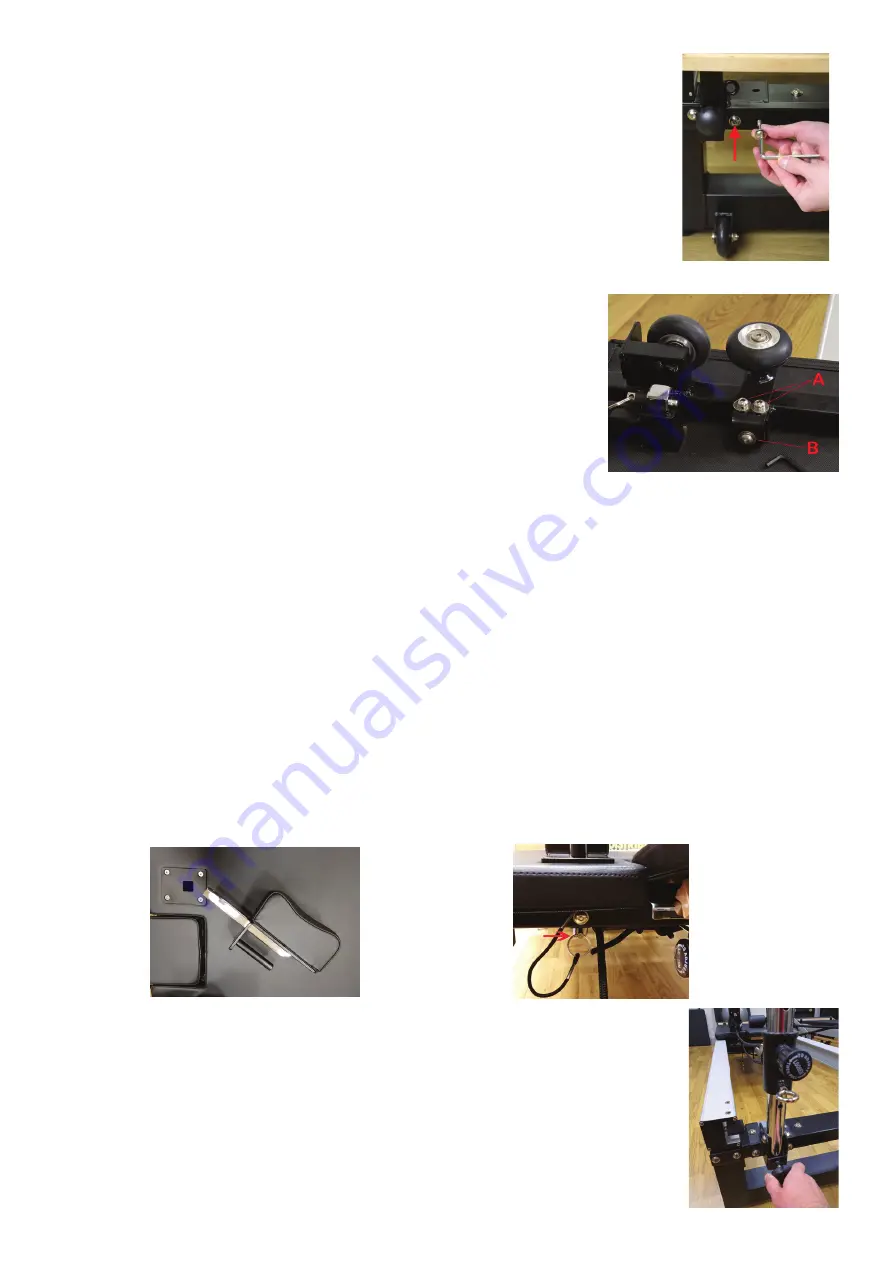
4
Fig. 7
Fig. 10
Fig. 6
Attaching the Standing Platform
To attach the maple standing platform, slide the component over the end of the
reformer, taking care to align all of the holes. Now screw the 4 long domed bolts
(with washers) into the 2 holes adjacent as per Fig. 6 and hand tighten. Then screw
in the remaining 8 small domed bolts hand tight. Once all bolts are in and hand
tight, go back and fully tighten all the bolts with the Allen key provided.
Attaching the Rope Risers
Now at the head end of the reformer attach the rope riser brackets in much the
same way as you attached the standing platform using the 4 long bolts to go
through the frame horizontally (bolt heads on the outside of the frame). Then add the
4 shorter bolts, which thread in from the top in to blind nuts inside the frame.
Once the rope risers are bolted on, secure the rope risers in a vertical position: to do
this first ensure they are fully dropped down and then secure in position by tightening
the riser fastener as in Fig. 10.
Please note: The carriage can be removed with the
rope risers attached but they must first be folded down (inside the frame) and the
pulleys need to be either rotated to the side or slid off and put on the floor.
Inserting the Reformer Carriage & checking the side wheel adjustment
Firstly remove the 2 rubber carriage stoppers from the end of the runners
(Fig. 8) these simply unscrew by hand, put them to one side. Now careful-
ly
remove the carriage bed from its box. Before inserting the carriage familiarise your-
self with the side wheel set up and adjustment system (Fig. 7). Now with one person
holding each side of the carriage bed, gently slide the carriage in to the
runners with the springs pointing towards the standing platform.
After attaching at least one spring, roll the carriage back and forward
checking that the carriage runs freely for the whole length of the runner.
There should be no squeaking or interference from the side wheels, if there
is the side wheels need to be moved inwards. Conversely there should not
be excessive side to side movement of the carriage in the runners or the
wheels need to be moved out.
If you have standard or Rehab legs adjustment of the side wheels can be done from under the ma-
chine, if you do not it is advised to remove the carriage to adjust the wheels.
To move the side wheels in (ie because they are causing the carriage to jam or, causing squeaking
noises) unscrew bolt B a few turns (Fig. 7) then loosen the two A bolts and push the wheel bracket in un-
til it hits the stop screw B, then retighten bolts A - now try the carriage again. If there is too much side to
side movement of the carriage, then the side wheels need to be moved out. To do this loosen bolts A,
then tighten bolt B by a few turns, which will push the wheel out, then retighten bolts A and try the carriage
again. We recommend small adjustments each time and after a few tries you should get the carriage to
run perfectly, with no interference from the side wheels & little side to side movement possible.
Once the carriage is running properly reinsert the rubber stoppers in the end of the runners and do hand
tight.
Offset Shoulder rests
Now insert the shoulder rests into each of the shoulder rest receiving holes on the carriage bed (Fig. 8).
They can be locked in place by placing the locking pin through the hole at the bottom of the chromed
bar (Fig. 9). The locking pins are attached on a string to the underside of the carriage as shown in Fig 9.
Fig.8
Fig.9





























